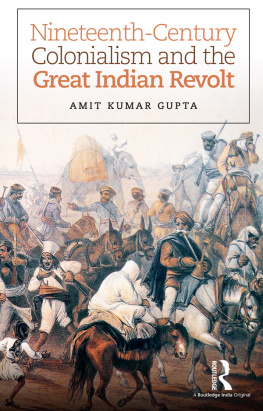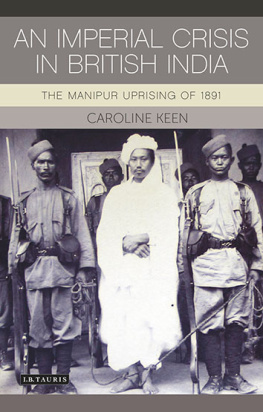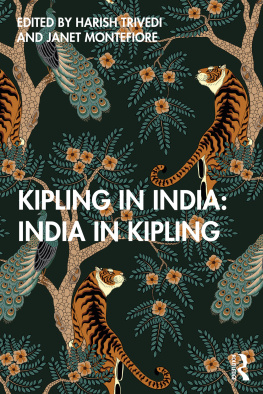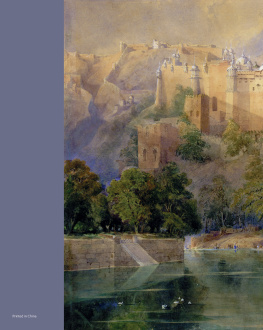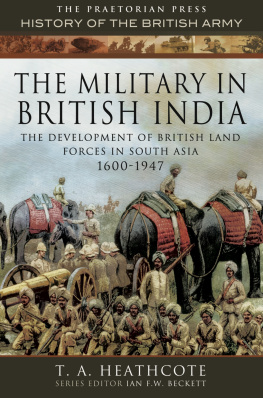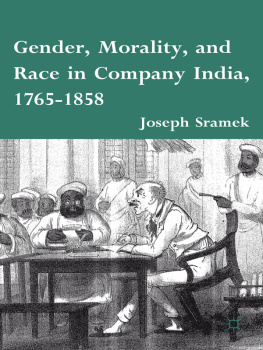Nineteenth-Century Colonialism and the Great Indian Revolt
This book examines the ruptured characteristics of colonialism in nineteenth-century India. It connects the British East India Companys efforts at the bourgeoization of India with the Revolt of 1857. The volume shows how the mutiny of Indian sepoys in the British Indian Army became a popular uprising of peasants, artisans and discontented aristocrats against the British. Tracing the rationale and consequences of this conflict, the monograph highlights how newly introduced political, economic and agrarian policies, as part of industrial Britains colonial policy, wreaked havoc, resulting in high land revenue assessment and its harsh mode of collection, rural indebtedness, steady immiseration of peasants, widespread land alienation, destitution and suicide.
Using rare archival sources, this book will be an important intervention in the study of nineteenth-century India, and will deeply interest scholars and researchers of modern Indian history and politics.
Amit Kumar Gupta is Research Consultant at the Indian Council of Historical Research (ICHR), New Delhi, India.
First published 2016
by Routledge
2 Park Square, Milton Park, Abingdon, Oxon OX14 4RN
and by Routledge
711 Third Avenue, New York, NY 10017
Routledge is an imprint of the Taylor & Francis Group, an informa business
2016 Amit Kumar Gupta
The right of Amit Kumar Gupta to be identified as author of this work has been asserted by him in accordance with sections 77 and 78 of the Copyright, Designs and Patents Act 1988.
All rights reserved. No part of this book may be reprinted or reproduced or utilised in any form or by any electronic, mechanical, or other means, now known or hereafter invented, including photocopying and recording, or in any information storage or retrieval system, without permission in writing from the publishers.
Trademark notice: Product or corporate names may be trademarks or registered trademarks, and are used only for identification and explanation without intent to infringe.
British Library Cataloguing-in-Publication Data
A catalogue record for this book is available from the British Library
Library of Congress Cataloging-in-Publication Data
A catalog record has been requested for this book
ISBN: 978-1-138-93544-0 (hbk)
ISBN: 978-1-315-67694-4 (ebk)
Typeset in Sabon
by Apex CoVantage, LLC
In memory of my mother.
Contents
I am grateful to Professor Mushirul Husan, exVice Chancellor of Jamia Millia Islamia, New Delhi, for offering me a Visiting Professorship (200910), and thus enabling me to undertake the research for this book. I am also thankful to the then Director, Professor Shakti Kak, and other colleagues at the Centre for Jawaharlal Nehru Studies, Noam Chomsky Complex, Jamia Millia Islamia, where I had been placed as Visiting Professor, for allowing me to do full-time research on the book for two years without any encumbrance.
I am much obliged to Professor Suman Gupta of the British Open University, the United Kingdom, for going through the typescript of this book, making useful observations and suggesting improvements; as well as to Dr Maya Gupta, formerly of the Nehru Trust Fund and the Nehru Memorial Museum and Library, New Delhi, for helping me to get over a few of my confusions and doubts during the time of its drafting. I am beholden indeed, to the Indian Council of Historical Research, New Delhi, for awarding me a Foreign Travel Grant to facilitate my consultation of some of the valuable sources for this study in Britain. My thanks are due to the authorities and staff of the India Office Records, British Library, and the University of Roehampton Library, London; the National Archives of India, the Nehru Memorial Museum and Library and the Indian Council of Historical Research Library, New Delhi; and the National Library and the Asiatic Society Library, Kolkata. I must also thank my fellow young researchers in the Dictionary of Martyrs project, Indian Council of Historical Research Rajesh Kumar, Ashfaque Ali, Mod. Naushad Ali, Shakeeb Athar and Md. Niyas A. for keeping me intellectually energized and running errands to take care of the slightest of my needs. I should by no means fail to express here my gratitude to Devendra Singh Bisht for his efficient typing and clerical assistance.
I must also record here how gratified I am to Routledge India, New Delhi, for the methodical and smooth way they have gone about producing this distinctive publication.
| Br. | Branch |
| Cons. | Consultation |
| Dept. | Department |
| Gov. | Gen. Governor General |
| IO/BL | India Office/British Library |
| Lt. Gov. | Lieutenant Governor |
| NAI | National Archives of India |
| NWP | North-Western Provinces |
| PP | Parliamentary Papers |
| Proc. | Proceedings |
| Rev. Br. | Revenue Branch |
| Secy. | Secretary |

Map of India during AD 1857
As one who has tried, over a considerable period, to understand some of the 20th-century developments in India, especially between the 1910s and the 1960s, the author of this study has often felt perplexed at the contrarieties and cross-currents this field presents, and the manner in which contradictions tend to become neutralized therein. In socio-economic and political terms, India did make, under British rule, considerable progress from the mid-18th century onwards, and at the end of the 19th century seemed poised even as a colony to become a modern state of substance and energy. Curiously enough, however, by the beginning of the 20th century, India was found to be suffering from debilitating incongruities: it had entered into the modern age, but could not break from medieval shackles; it had been brought into a technological era, but depended mainly on the cultivation of land (some degree of industrialization had been initiated, but India remained agro-economic in the main); it had stepped on to the path of bourgeois progress, but remained largely a source of raw materials and a market for British manufacturers. India was encouraged to continue with counterpoising conflicting modes of economic production: the domineering capitalist one that industrial Britain prompted, and the declining feudal one that imperial Britain thought it prudent to retain and protect. This curious coexistence of the capitalist and the feudal systems in the economy of India had in effect subjected its people to exploitation by both metropolitan capitalists and indigenous aristocratic and landlord-ist elements.
Generally, the appropriation of social surplus by native feudal forces was directly through their rack-renting of land, exaction of irregular levies and tolls, and extraction of forced labour ( corve ), as well as the compounding of interest which creditors (money-lenders in the main, but also landlords) charged on indebted peasants, resulting in large-scale alienation of their lands and in their being engaged primarily in subsistence agriculture. Unlike such straightforward feudal means, the capitalist mode of social appropriation was a roundabout one. Capitalist Britain ruled by operating an unequal trading arrangement whereby India was made to export raw materials and foodstuffs, and import British-manufactured goods, and that too on terms favourable to manufacturers in Britain and expatriate investors (in plantations and mines, for example) in India.

